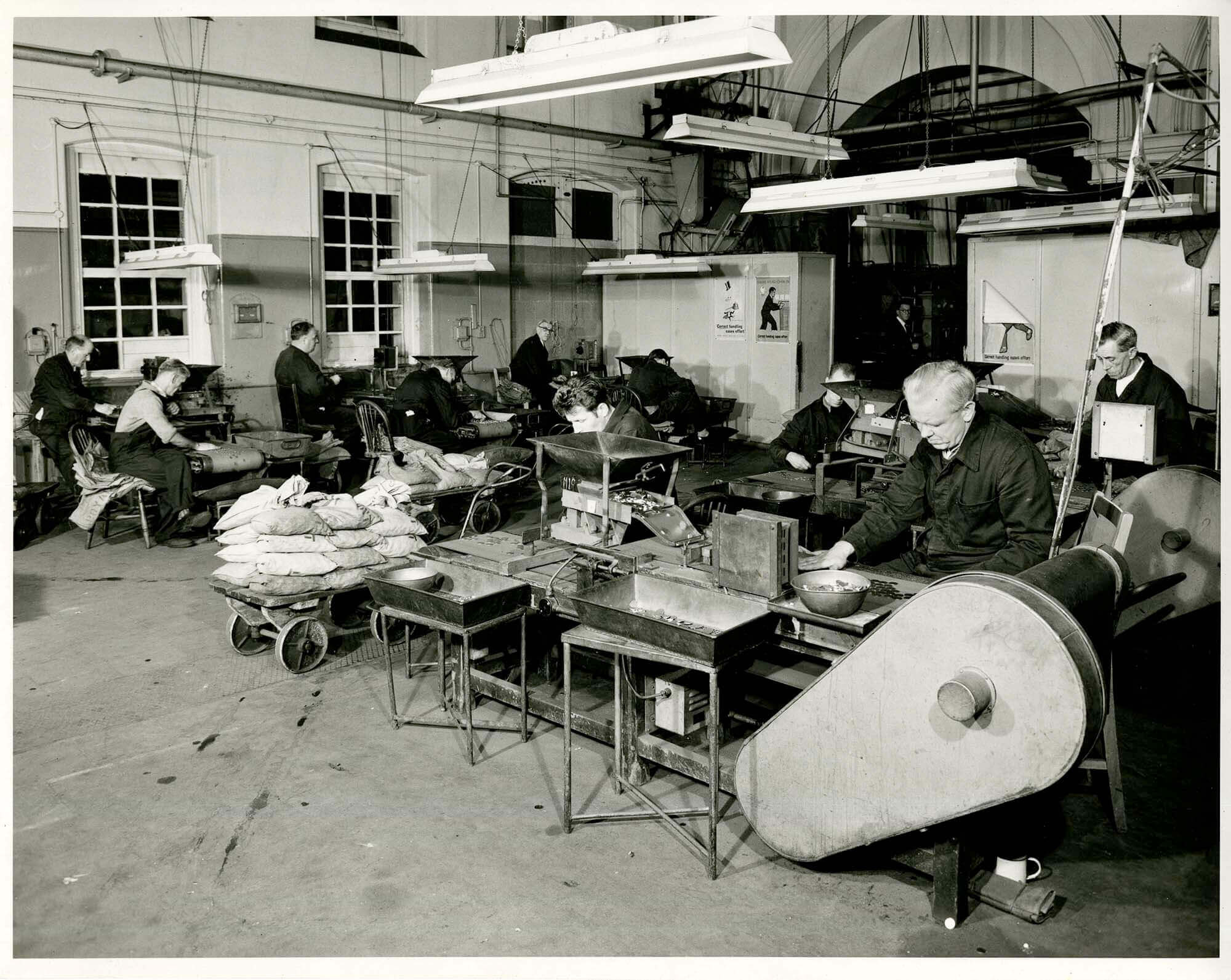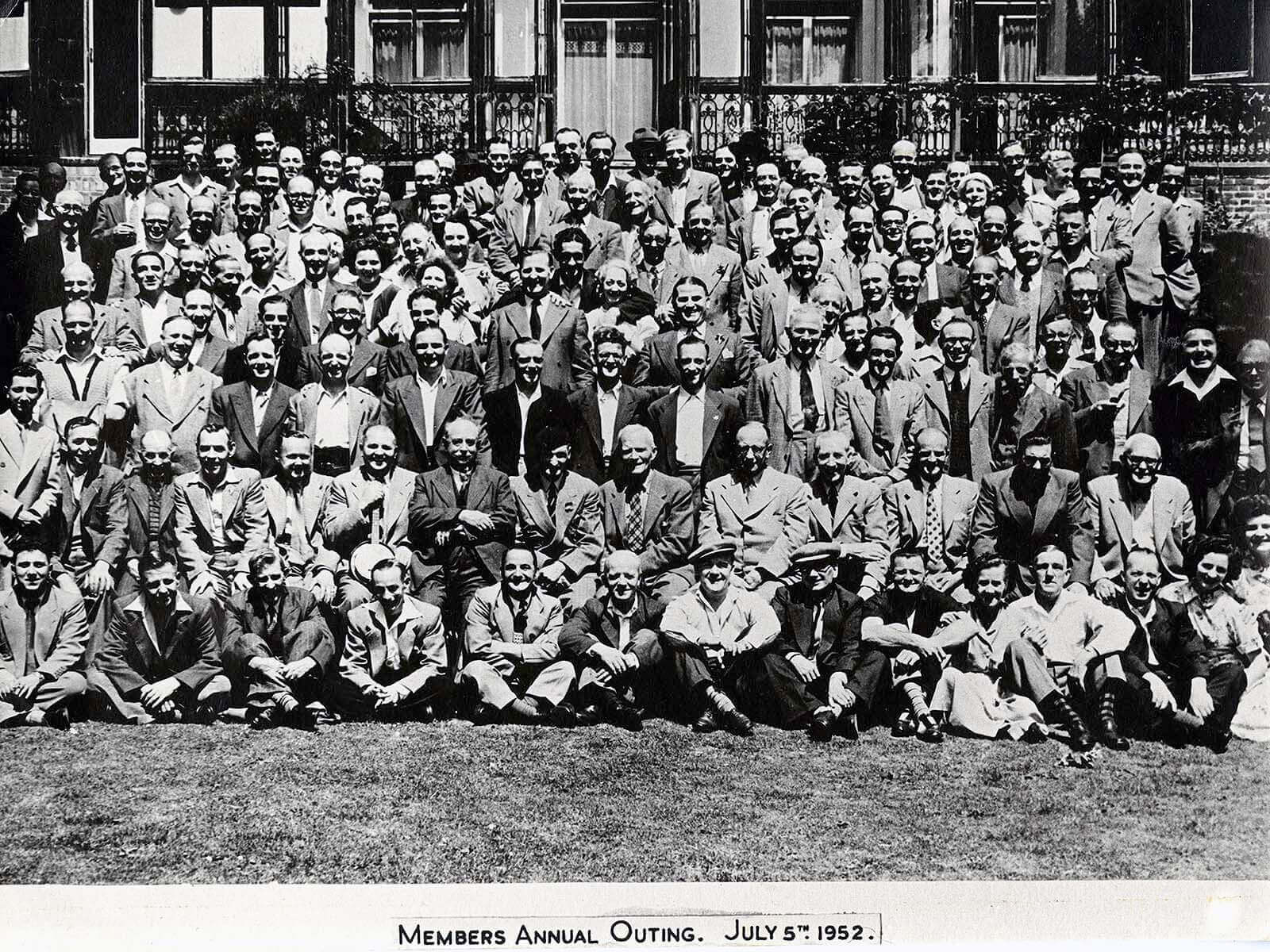Stories from the Royal Mint
The Royal Mint has always had an active trade union presence, and the unions at work in the mid twentieth century brought about many important improvements to the lives and welfare of the workforce. Many improvements to staff welfare were also made by a variety of committees and sub-committees, established throughout the period to consult with both the trade unions and the Mint officials on specific matters. Some of the more notable, and unique, points of discussion in the 1940s-1960s were as follows.
The Price of Chips
This important matter, still relevant to this day, was the subject of a Special Meeting of the Joint Industrial Council on 23 November 1953, following disagreement between the Canteen Committee and the Trade Unions on proposed price increases.
All things considered, the Canteen Accounts were in poor condition, following the discovery of serious irregularities in the recording of finances in 1951. While price increases were therefore required to sustain the service, the Trade Unions had found difficulty in persuading the workmen that they ought to bear the costs. Moreover, they argued, the Canteen was of considerably lower quality than the Officers’ Mess, where those on higher salaries could eat and relax. The fairest solution, they proposed, was that the workmen would accept only small increases – of 1½d on meals and just a halfpenny on chips – and that the Officers would pay threepence more per meal, owing to their higher salaries.

Royal Mint worker eating dinner at Tower Hill
Committee Chairman, Sir Lionel Thompson, countered by explaining that the meals served in both the Canteen and Mess were the same, but could not dispute that it was common practice for higher charges to be paid for food where better service and comfort was available. Because meals served in the Officers’ Mess already subsidised part of the Canteen finances, Thompson agreed to the small price increases only, with the Secretary, Mr Crabb, also suggesting the need to improve the comfort and satisfaction of the Canteen as a whole.
While chips would cost a halfpenny more than before, they would herald the way for much larger improvements.
Music or Muzak?
An American invention and brand, Muzak is a form of background music played in public settings, of the sort most commonly associated with elevator music. It found a use in the workplace in the 1950s, to some controversy, and was trialled at the Royal Mint in the 1960s to limited success.
A trial of the system was arranged in mid-1961, on the basis that the £100 cost would not be queried by the treasury, although any more permanent installation would require their blessing. Musak speakers would be fitted in factory areas, and stimulating tracks would be played, with the hopes of increasing the productivity of the workforce.

Overlooking Room at the Royal Mint c.1958
Unfortunately, the vast majority of the workforce, and the Trade Union bodies, found reason to object. The Trade Unions were astounded that they had not been consulted about the fixing of the volume control. The Mechanics Shop opposed it entirely, and those working in the Weighing Room were of mixed opinion, but universally objected to the early hour at which the system was switched on. Ultimately as minutes of meetings with Sir John Hastings James, Deputy Master of the Mint, reveal, “The Deputy Master pointed out that the real point at issue was whether productivity improved rather than whether the music was liked”.
It did not, and the trial was subsequently ended in December of 1961, much to the relief of the Trade Unions.
Sports and Socials Club
Many employees at the Royal Mint are still involved in a range of sports and social clubs. From its inception in 1818, the Royal Mint Sports and Socials Club was very active and an asset to Mint activities throughout the century. A report of 1952 gives its membership as 500 out of around 800 total Mint employees, with a Committee consisting of members of the workforce and an annual subscription fee of just one shilling.

Royal Mint Sports and Social Club Members Outing July 1952
The Club frequently organised social outings, including dances, whist drives, cinema shows, and an Annual Outing, which was heavily subsidised by Club funds and always proved very popular. The Club had a space on site in the Seamen’s Registry Building, in which a bar was situated for use after Mint hours and during club evenings. It also acted as a means by which Members could purchase luxury goods, such as tobacco, at a greatly discounted rate. The 1952 report suggests that an annual average of £800 passed through the hands of each of the twelve individuals in the Mint who were responsible for the receipt of stocks of tobacco for sale to members. The £10,000 annual income from tobacco alone made up over 80% of the Club’s annual turnover.
The Club was regarded highly by both Mint staff and officials as an institution that forged a close bond between management and staff, as well as provided the means for exercise and recreation for all. Mr Turtle, specifically, the Secretary of the club, is consistently commended for his unwavering service to the social side of Mint activities throughout this period.
